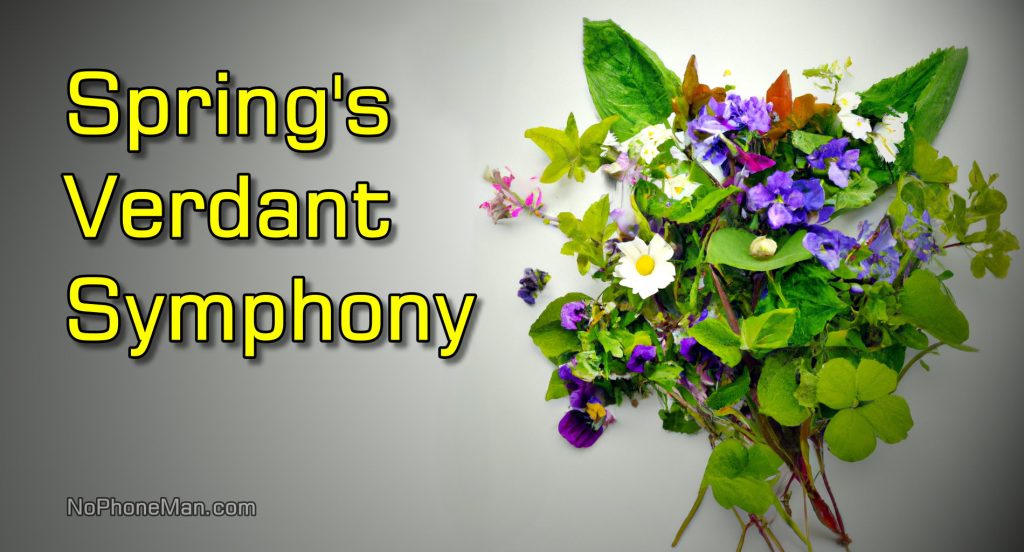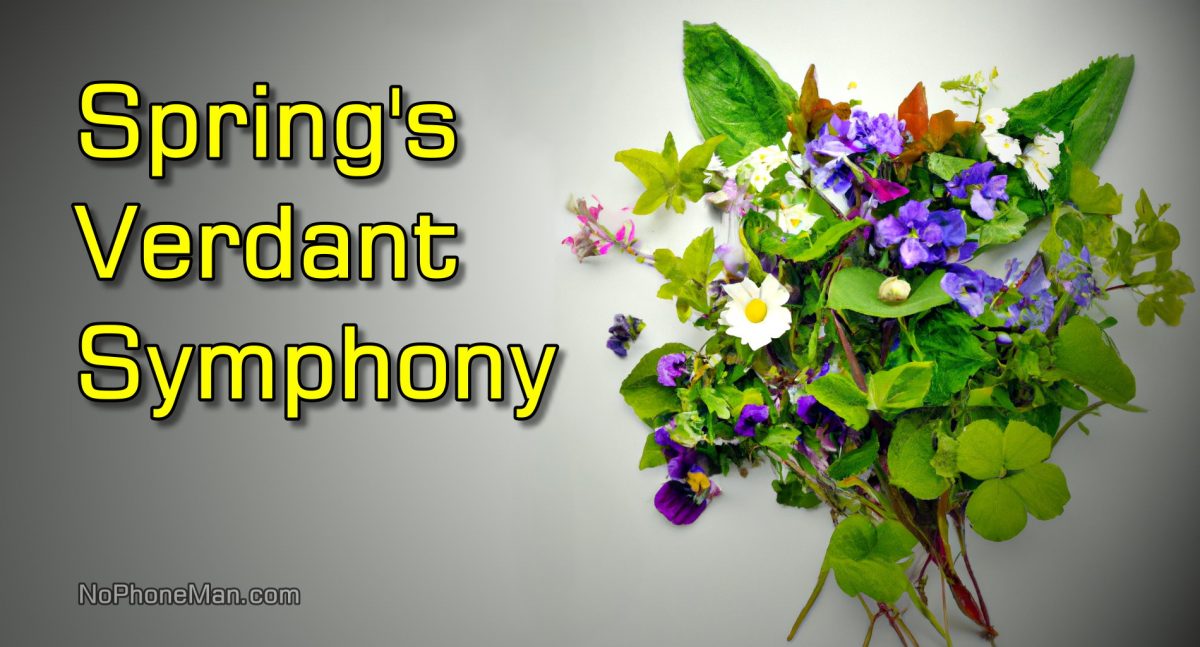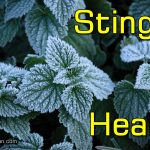
As the winter’s icy grip loosens its hold, a remarkable transformation takes place in the natural world.
Delicate shoots emerge from the thawing ground, revealing a stunning array of plants that bring life and vibrancy to the awakening landscape.
Welcome to “Spring’s Awakening,” a captivating video journey that delves into the enchanting world of plants emerging from their wintry slumber. As the snow melts away, nature reveals an array of vibrant flora, each with its own story to tell. Join me as I explore these early spring plants, admiring their beauty and uncovering their diverse properties – from medicinal wonders to hidden dangers.
In this immersive video, I showcase a captivating collection of plant species that herald the arrival of spring. With a keen eye for detail, I capture the essence of each plant, enabling you to experience their splendor from the comfort of your screens.
As I guide you through this botanical tapestry, I highlight the various uses of these remarkable plants. Some may surprise you with their toxicity, cautioning us to admire them from a distance. Others reveal their delectable qualities, presenting edible delights waiting to be savored. I also delve into the medicinal treasures offered by certain plants, which have long been employed in traditional remedies.
From the alluring periwinkles to the delicate wood anemones, each contributing to the vibrancy of spring’s arrival, we celebrate the diversity of nature’s creations, nurturing our curiosity and appreciation for the natural world.
“Spring’s Awakening” is an immersive visual feast that combines breathtaking imagery, informative narration, and captivating storytelling. Whether you have a green thumb or simply hold a fascination for the wonders of nature, this video is sure to ignite your sense of wonder and deepen your connection to the marvels of springtime.
Mesmerized by the awakening beauty of spring, as nature bestows its treasures upon us once again, let’s immerse ourselves in the beauty of these early spring plants, appreciating their role in the awakening of nature.
With their toxic, edible, and medicinal attributes, these plants exemplify the intricate relationship between humans and the natural world.
Join me on this enchanting journey of exploration, where every petal and leaf tells a story, and the vibrant tapestry of spring unfolds before our eyes. This video invites you to explore the richness and significance of these botanical gems that grace our world each spring, bringing joy, nourishment, and healing to all who encounter them.
Here’s the list of featured herbs:
Wood Sorrel (Oxalis acetosella):
Wood Sorrel, also known by its Latin name Oxalis acetosella, is a delightful springtime plant that captivates with its delicate appearance and tangy taste. This low-growing perennial herb features heart-shaped leaves adorned with three distinct leaflets. The plant’s dainty white flowers, tinged with shades of pink or violet, add an enchanting touch to woodland landscapes. Wood Sorrel’s leaves, when consumed in moderation, provide a refreshing addition to salads and other culinary creations. Additionally, this charming plant contains high levels of vitamin C, making it a natural remedy for scurvy.
Stinging Nettle (Urtica dioica):
The Stinging Nettle, scientifically known as Urtica dioica, is a versatile plant that demands caution but rewards those who approach it with respect. With its serrated leaves and characteristic stinging hairs, this perennial herb is a formidable presence. However, once properly handled and cooked, its leaves can be transformed into a delicious and nutritious ingredient. Rich in vitamins, minerals, and antioxidants, nettle leaves are often used in teas, soups, and even pesto. This remarkable plant also possesses medicinal properties and has been traditionally used to alleviate allergies, joint pain, and urinary tract infections.
Unspotted Lungwort (Pulmonaria obscura):
Unspotted Lungwort, or Pulmonaria obscura, is a captivating herbaceous perennial that graces woodlands and shady gardens during the spring months. Its elegant, drooping clusters of flowers range in color from pink to blue and gradually shift as they mature. The leaves of Unspotted Lungwort are perceived to resemble lungs, and it was believed that the plant possessed the power to heal those organs. Historically, this plant has been utilized for its medicinal properties, particularly in herbal remedies for respiratory ailments such as bronchitis and coughs.
Male Fern (Dryopteris filix-mas):
With its robust and vibrant fronds, the Male Fern, scientifically named Dryopteris filix-mas, is a majestic plant that thrives in damp woodlands and shady areas. This perennial fern stands tall, reaching heights of up to 1.5 meters, with its elegant and feathery green foliage. While not edible, the Male Fern has a long history of medicinal use. Its rhizomes were traditionally employed as a vermifuge to expel intestinal worms. Caution is advised, however, as the fern’s spores can cause irritation if inhaled.
Lesser Celandine (Ficaria verna):
The Lesser Celandine, or Ficaria verna, is a charming perennial herb that heralds the arrival of spring with its bright yellow flowers and glossy green leaves. This low-growing plant is highly adaptable and thrives in moist environments, often creating breathtaking displays in meadows and along riverbanks. Although visually captivating, Lesser Celandine is considered invasive in some regions. It’s worth noting that while this plant has not been historically used for culinary or medicinal purposes, it holds cultural significance in folklore and literature, often symbolizing resurrection and rebirth.
Sticky Willy (Galium aparine):
Sticky Willy, or Galium aparine, is an intriguing annual plant that has earned its name due to its sticky nature. With whorls of narrow leaves and tiny hooked hairs along its stem, this plant easily attaches itself to passing objects, including animals and clothing. Despite its somewhat pesky reputation, Sticky Willy has been employed in traditional medicine as a diuretic and an astringent. It’s worth noting that while it may not be toxic, its sticky hairs can cause skin irritation for some individuals. The plant’s velcro-like nature also serves as inspiration for the creation of Velcro fasteners.
Early Dog Violet (Viola reichenbachiana):
The Early Dog Violet, scientifically known as Viola reichenbachiana, is a dainty perennial plant that ushers in spring with its vibrant purple-blue flowers. This delightful violet can be found in grasslands, woodlands, and along hedgerows. Its heart-shaped leaves add to its visual charm. While not commonly used in cooking, the Early Dog Violet holds a place in traditional medicine, where it was believed to possess anti-inflammatory properties and was used to treat headaches and respiratory ailments.
Lesser Periwinkle (Vinca minor):
The Lesser Periwinkle, or Vinca minor, is an evergreen ground cover that delights with its glossy, dark green leaves and enchanting violet-blue flowers. This perennial plant, often found in woodland settings, creates a beautiful carpet of color. While not edible, the Lesser Periwinkle has a long history of medicinal use. Its leaves contain alkaloids that have been utilized in traditional remedies for ailments such as bleeding, memory loss, and throat infections.
Wild Strawberry (Fragaria vesca):
The Wild Strawberry, scientifically named Fragaria vesca, is a charming perennial plant that offers a delectable treat for those fortunate enough to stumble upon its delicate berries. Unlike their cultivated counterparts, wild strawberries are smaller, bursting with flavor, and possess a subtle sweetness. These edible fruits are often enjoyed fresh or incorporated into various culinary delights, from jams to desserts. Wild Strawberry plants also have a history of medicinal use, particularly as a diuretic and astringent.
Wood Anemone (Anemone nemorosa):
Wood Anemone, or Anemone nemorosa, is a captivating springtime flower that carpets the forest floor with its delicate white petals. This perennial herb, also available in pink or purple hues, thrives in woodland environments and often emerges before the tree canopy fully develops. While not considered edible, Wood Anemone holds symbolic significance and has been used in traditional medicine to treat ailments such as gout and rheumatism.
Ground Ivy (Glechoma hederacea):
Glechoma hederacea, commonly called Ground Ivy or Creeping Charlie, is a low-growing perennial herb with rounded leaves and small, bluish-purple flowers that emerge in spring. While not commonly used for culinary purposes, Ground Ivy has been employed in traditional herbal medicine as a treatment for various ailments. It has been associated with easing respiratory issues, alleviating digestive discomfort, and even providing relief for headaches. Additionally, Ground Ivy is sometimes used as a flavorful and aromatic ingredient in brewing herbal teas and ales.
Purple Dead Nettle (Lamium purpureum):
Lamium purpureum, known as Purple Dead Nettle, is an eye-catching spring plant with vibrant purple flowers and velvety leaves. Despite its name, Purple Dead Nettle is not a true nettle and does not possess stinging hairs. This plant is edible and has a slightly minty flavor, making it a popular addition to salads or used as a garnish. Purple Dead Nettle has also been utilized in traditional medicine for its potential anti-inflammatory and astringent properties. Its striking appearance and versatility make Purple Dead Nettle a remarkable addition to the springtime landscape.
Common Beech (Fagus sylvatica):
The Common Beech, scientifically named Fagus sylvatica, is a majestic deciduous tree that reigns over European woodlands, especially during springtime. With its smooth, gray bark and vibrant green foliage, this towering tree adds grandeur to the landscape. While not directly edible, the beech nuts produced by the tree are cherished by wildlife. Additionally, beech leaves have been used in traditional medicine as a remedy for various ailments, including skin conditions and digestive issues.
Germander Speedwell (Veronica chamaedrys):
Germander Speedwell, or Veronica chamaedrys, is a charming perennial herb that adorns meadows, grasslands, and woodland edges with its striking blue flowers. Its name “speedwell” originates from an Old English term meaning “goodbye sorrow,” as it was believed to have calming properties. While not commonly used in culinary pursuits, this plant holds historical medicinal significance, particularly as an herbal remedy for respiratory ailments, digestive disorders, and skin conditions.
Persian Speedwell (Veronica persica):
Persian Speedwell, scientifically known as Veronica persica, is a low-growing annual plant that covers bare patches of soil with a carpet of small, pale blue flowers. Native to Western Asia, this charming herb has spread to many regions worldwide. While not considered edible, Persian Speedwell has a history of medicinal use, particularly in herbal remedies for respiratory conditions, gastrointestinal disorders, and urinary tract ailments.
Spring Vetch (Lathyrus vernus):
Spring Vetch, scientifically known as Lathyrus vernus, is a charming perennial plant that graces meadows, woodlands, and rocky slopes with its delicate beauty. With its slender tendrils and vibrant flowers, Spring Vetch adds a splash of color to the spring landscape. The flowers of Spring Vetch come in shades of pink, purple, or white, forming clusters of captivating blossoms. While not commonly consumed, this plant has historically been used as forage for livestock, thanks to its nutritious foliage. Its seeds have also found traditional medicinal use, where they were believed to possess diuretic and expectorant properties.
Oakmoss (Evernia prunastri):
Oakmoss, scientifically known as Evernia prunastri, is a unique lichen that finds its home on the branches and trunks of oak trees. This grayish-green, thread-like lichen emits a distinct earthy fragrance. While not edible or medicinal, Oakmoss possesses a rich, earthy aroma and plays a vital role in perfumery, where it is used as a fixative to enhance the longevity of fragrance compositions. The collection of Oakmoss is regulated in some countries due to conservation concerns, as it plays a crucial role in the ecosystem, providing habitat and food for various organisms.
Herb Paris (Paris quadrifolia):
Herb Paris, or Paris quadrifolia, is an enchanting perennial herb that can be found in shaded woodlands and damp meadows. Its distinctive star-shaped leaves and solitary, greenish-yellow flowers make it easily recognizable. Herb Paris is not considered edible and contains toxic compounds. Despite this, it holds symbolic significance in folklore and has been historically associated with various medicinal uses, including the treatment of fevers, wounds, and even as an aphrodisiac.
Field Pansy (Viola arvensis):
Viola arvensis, known as Field Pansy or Wild Pansy, is a delicate spring flower with distinctive purple or yellow petals adorned with intricate patterns. Although not commonly consumed, Field Pansy has been used in traditional medicine for its potential anti-inflammatory and diuretic properties. It has also been associated with soothing skin irritations and alleviating respiratory issues. Field Pansy adds a touch of beauty and color to meadows and open spaces, enhancing the vibrant tapestry of springtime flora.





